GARDINER — Time and circumstance have left the footstone for the daughters of Gen. Henry Dearborn in pieces.
Seventeen pieces, in fact.
But Thursday, the repaired stone was placed once again opposite the headstone for Sophia Hobart and Pamela Augusta Gilman, where it belongs.

For six years, William King, Hank McIntyre and Dawn Thistle have been working to restore the churchyard on Dresden Avenue that belonged to the former St. Anne’s Episcopal Church, tracking down the headstones and footstones that had been removed from the churchyard over the years, repairing them where needed and setting them back in place.
At this point, they are closer to the end of their project than they have ever been. By their estimation, they have five more stones to plant.
For King, 88, the project started as a mission to reset the headstones of his ancestors, a branch of the Gardiner family that established the Gardinerstown Plantation in 1754.
“I started out to plant my family,” King said Thursday, standing in the churchyard, pointing to a line of headstones of family members, including Gideon and Dorcas Gardiner.
Gideon was a first cousin of Sylvester Gardiner, who established Gardinerstown Plantation in 1754. Dorcas was likely the first person buried in that churchyard.
Five generations of his family lived in Gardiner, and members of three generations are buried in that churchyard.
King, his brother and their wives first visited the churchyard 27 years ago. When he returned seven years later, many of the head headstones were scattered on the ground, some pulled from their bases.
The 20th century was hard on the churchyard. Thistle said there were calls in the 1920s to do something to save the churchyard that dated back to the late 18th century. As the city grew and changed, buildings were erected and torn down on the parcels adjacent to the churchyard, and records from the 1970s record vandalism to it and the Gardiner Common, just across Dresden Avenue.
They knew, based on photographs King’s sister-in-law had taken at that first visit, where some of the stones belonged, and they were able to place the ones they could identify.
Others, they feared, were permanently gone.
“We kept thinking we were near done,” King said. “Then, someone would come by and say, ‘Did you get the stones in the basement?’ We said, ‘What stones in the basement?'”
The first time they heard that was just a week after they had used radar on the churchyard to identify anomalies, which are probably graves.
“That happened one week after the ground-penetrating radar came and found 46, and we had only nine more stones,” said Thistle, the archive librarian at the Gardiner Public Library. “The next week, we went into the basement and there were 22 of our stones.”
Others were uncovered by accident. Electricians working on rewiring found half of one buried in the basement and set it aside for them. They found the other half after poking around a bit.

William King, left, and Hank McIntyre install a footstone Thursday in the churchyard at Christ Church Episcopal on the Gardiner Common. Joe Phelan/Kennebec Journal Buy this Photo
“Our theory is that they were probably stacked near the door at one point,” Thistle said, “but when they did something in the basement, they might have been moved them to another location out of the way.”
“The one they left there was big and heavy,” McIntyre said. “It makes sense they didn’t go far with it. It got covered over lightly.”
The plot is properly known as a churchyard, even if the church it served no longer exists. And as was the custom of churchyards of the time, the graves are laid with the feet oriented to the east, so at the time of the resurrection, people would rise from their graves facing east. And in the proper order of things, headstones and footstones were planted with the inscribed sides facing away from the grave.
The burial ground was a part of St. Anne’s, the Episcopal church that was built just south of where Christ Church Episcopal now stands, at the corner of Dresden Avenue and Church Street. It was burned down in August 1793 by Henry McCausland, a veteran of the Revolutionary War and an early settler.
Historians say McCausland had a vision he should make a burned offering of the church and sacrifice its pastor. He failed to kill the Rev. Joseph Warren; instead, he killed Abigail Warren. One of the repaired stones is a small slate stone for Abigail Warren’s 2-year-old granddaughter Caroline, who died as a child in the spotted fever epidemic of 1814. The stone had been in 22 pieces.
Dearborn, a New Hamspshire native, came to know the Gardiner area during his time as a soldier during the Revolutionary War, Thistle said. He served under Col. Benedict Arnold, who was launching his expedition to take Quebec with help and provisions provided by Reuben Colburn, whose home stands in what is now Pittston, on the other side of the Kennebec River.
King said Dearborn had a house at one time on the location where the Gardiner Public Library now stands.

This January 2020 photograph shows progress Dawn Thistle made as she reassembled the broken pieces of the footstone that was installed last Thursday. Submitted photo
Thistle said she started tinkering with the pieces of the Dearborn daughters’ footstone in August 2018.
Hobart was the wife of the first mayor of Bangor, and Gilman is reputed to be the inspiration for the naming of the state’s capital city, which stands 10 miles north of Gardiner, according to King.
The 17 dirty pieces of footstone were among those gathered up from the vacant space in the basement at the foot of Christ Church’s steeple. Thistle worked with the pieces, shifting them around to find how they fit back together.
Finally, in January, they came together and the the stone was assembled, bit by bit, with the help of a specific epoxy they have used on all the broken stones.
McIntyre also worked on the pieces, making sure they had dried out.
“How many epoxy sessions did we have for this one?” Thistle asked her partners Thursday. “It was easily five?”
When they planted the Dearborn daughters’ footstone Thursday, it was with the practiced routine they have developed over the six years of the project.
McIntyre carved out the turf and set it aside. He then dug a slot, estimating the depth against the length of the stone. King and Thistle weighed in on the angle and orientation. King then held the stone in place, while McIntyre shoveled in some sand and pea gravel for drainage and filled the hole with the soil he tamped down with a short board. McIntyre then replanted the turf.
King estimated they have about another year to go on the project. When they are not reassembling stones, they are cleaning them. They have three more to track down, as far as they can tell.
“It’s a very rewarding project,” King said, adding he did not think they would be spending as much time on it as they have.
“We only had 30 stones to work with,” he said. “We just keep getting stones. We found stones within the last two months.”
Send questions/comments to the editors.

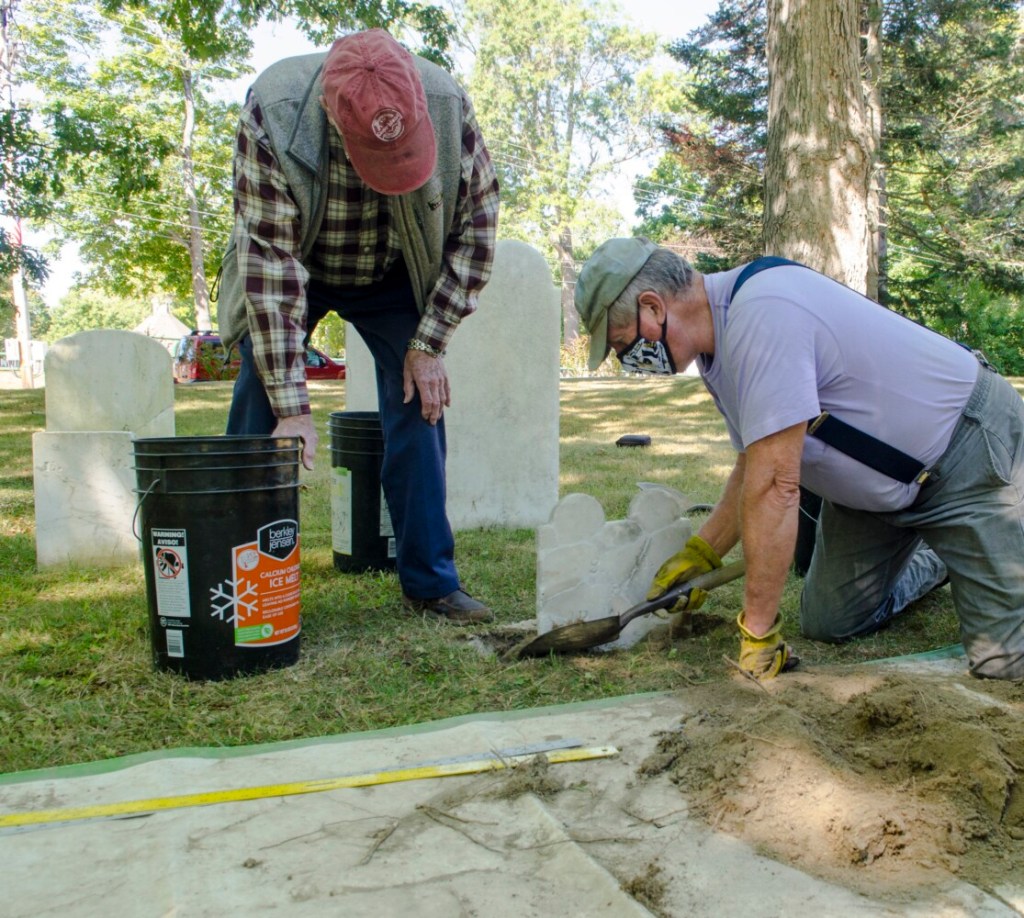
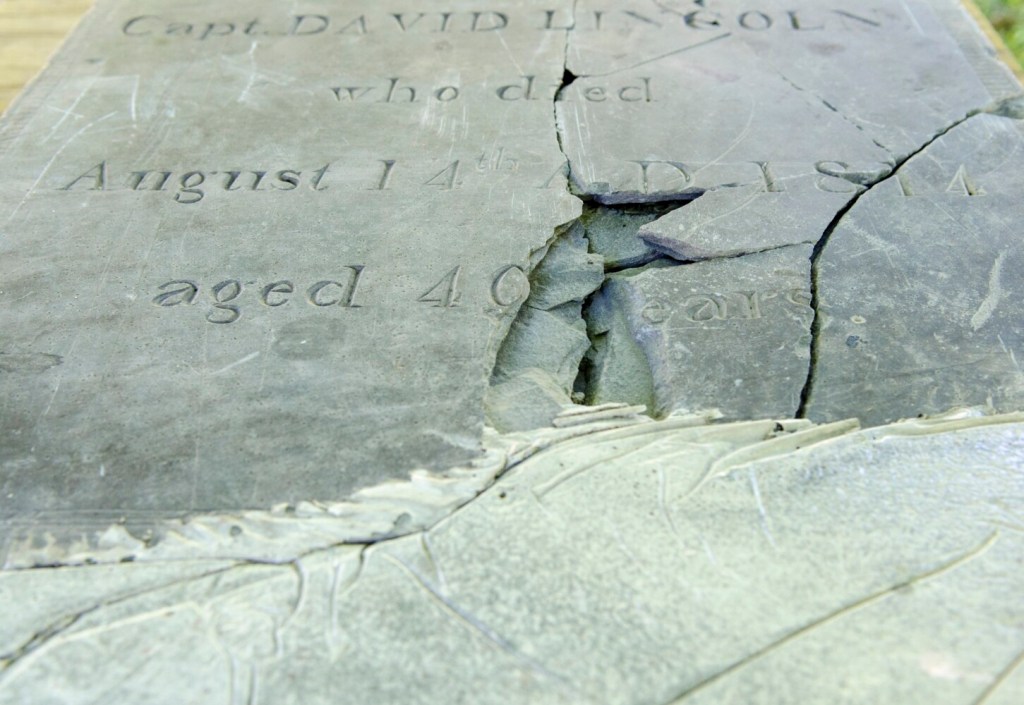
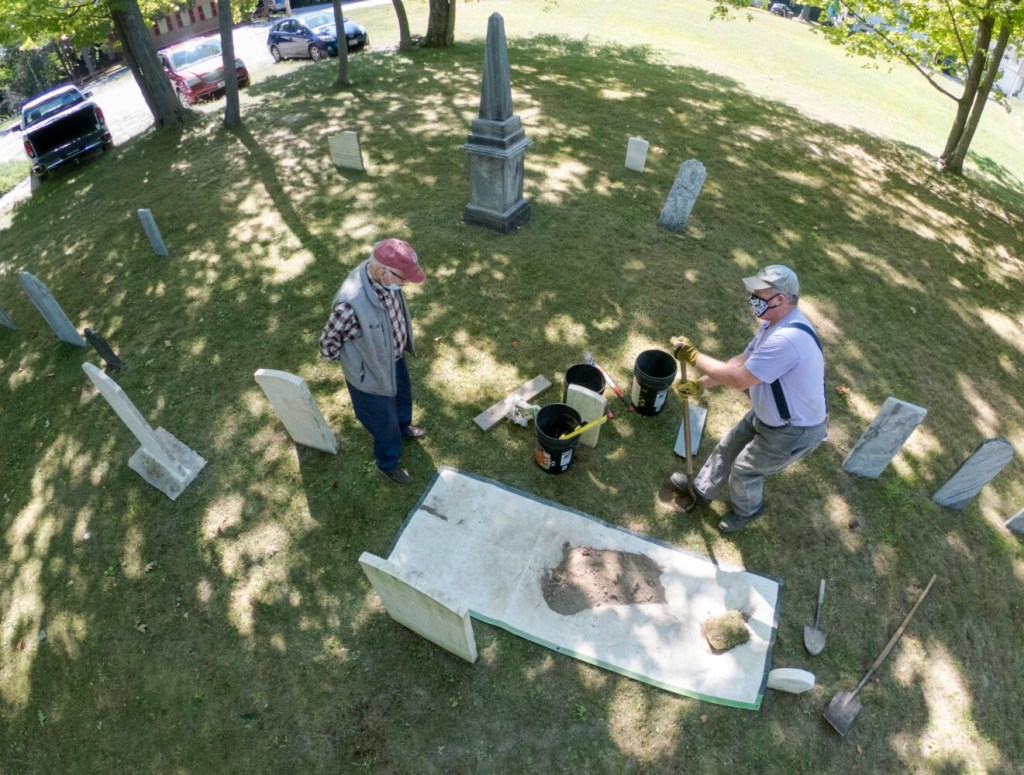
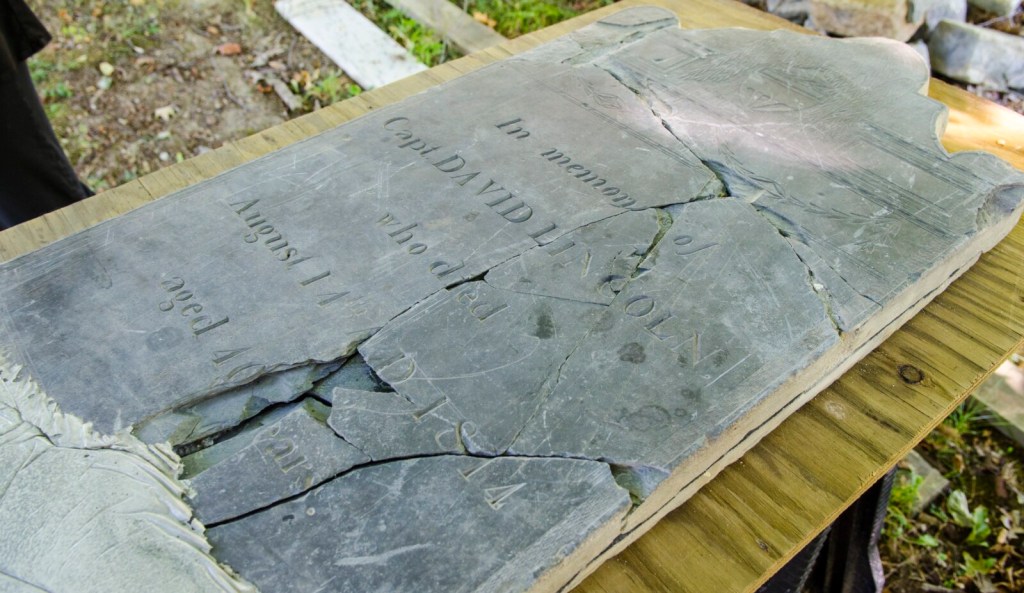
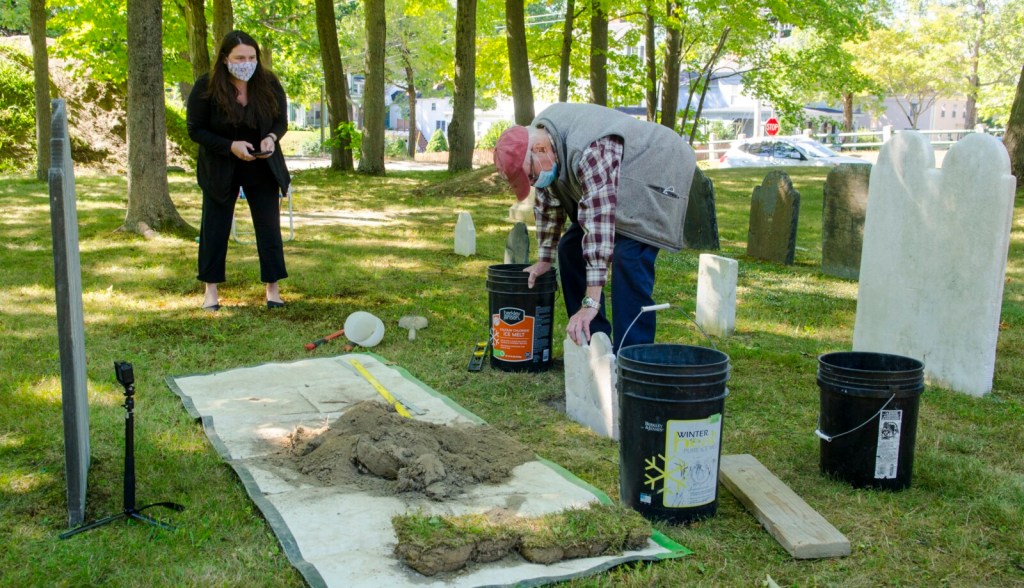

Success. Please wait for the page to reload. If the page does not reload within 5 seconds, please refresh the page.
Enter your email and password to access comments.
Hi, to comment on stories you must . This profile is in addition to your subscription and website login.
Already have a commenting profile? .
Invalid username/password.
Please check your email to confirm and complete your registration.
Only subscribers are eligible to post comments. Please subscribe or login first for digital access. Here’s why.
Use the form below to reset your password. When you've submitted your account email, we will send an email with a reset code.